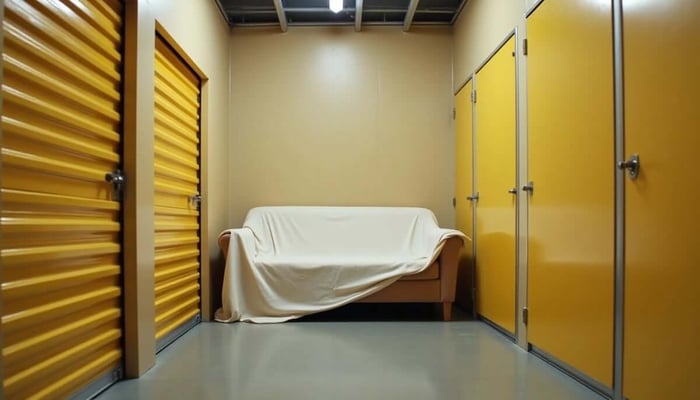Table of Contents
Fall and winter are the best times to declutter and organize toys at home. As colder weather keeps families indoors, it’s the perfect season to sort, donate, and store toys before the holidays — and to make sure your toy storage solutions are up to par.
In this guide, you’ll learn how to:
Organize toys at home and in the garage
Store stuffed animals, outdoor playsets, and collectibles
Decide when to use self-storage for toys
Choose the right unit size and climate option
Plus, we’ll cover other helpful toy storage tips! Your home, playroom, and garage will be decluttered in no time - and ready for more toys next holiday season.
What’s the Best Way to Store Toys When You’re Running Out of Space?
As kids grow and seasons change, toys tend to take over every corner of the home. From stuffed animals to Power Wheels to Barbie houses, it’s easy to run out of space. The best way to manage toy clutter is to rotate, organize, and safely store what isn’t being used - especially during fall, when families start spending more time indoors and preparing for holiday gifts.
Best Ways to Store Toys at Home
To keep playtime manageable and your home clutter-free, start by reorganizing your toy collection at home before storing larger or seasonal toys in the garage or a storage unit.
Use clear toy storage bins or boxes. Transparent containers help kids see what’s inside while keeping dust out.
Label everything. Mark bins by category — such as stuffed animals, building sets, and outdoor toys — for quick cleanup.
Add cube shelves or low bookshelves. Open shelving keeps toys visible yet contained.
Rotate toys seasonally. Keep only a few favorites out; store extras to make them feel new again later.
Use under-bed or closet storage. Ideal for toy car storage or small pieces like LEGO bricks.
Create a “toy garage” zone. For larger items, such as Power Wheels or playhouses, dedicate a spot in your garage or consider moving them into a drive-up storage unit when not in use.
Best Ways to Store Toys in the Garage
The garage is often the next stop when you’re running out of indoor and basement space. Without a plan, your garage can become a cluttered mess of forgotten toys and gear. Use these garage toy storage ideas to keep things organized and safe:
Use vertical wall storage. Pegboards or wall hooks keep bikes and scooters off the floor.
Create labeled toy zones. Separate bins for “Outdoor Toys,” “Sports Gear,” and “Ride-On Toys.”
Use heavy-duty toy storage boxes. Lidded tubs protect from dust and pests.
Keep seasonal toys up high. Overhead racks are perfect for summer-only toys.
Store electric ride-ons smartly. Remove batteries and charge them indoors.
Know when to upsize. If your garage feels like a toy warehouse, a drive-up Storage Star unit gives you back that parking space while keeping gear easy to access.
What Are the Best Toy Storage Ideas for Different Types of Toys?
Different toys need different storage approaches. Here’s how to protect, pack, and store them safely:
Stuffed Toy Storage
Use breathable toy storage bins or fabric boxes to prevent dust and odor buildup. Avoid sealing plush toys in airtight containers, as moisture can cause mildew. For long-term stuffed toy storage, place them in labeled, stackable containers on upper shelving in your unit.
Toy Car Storage and Collectibles
Small toys, such as Matchbox cars, LEGO sets, and figurines, can be stored in stackable toy storage boxes or divided bins for easy organization. Wrap collectibles in acid-free paper and store upright. Climate-controlled units help prevent fading, warping, or corrosion.
Outdoor Toy Storage
As fall arrives, outdoor items such as Power Wheels, bikes, and playhouses should be cleaned, dried, and covered before being stored. Moisture and cold can cause rust, fading, and damage to batteries.
Quick Tips for Outdoor Toy Storage:
Clean and dry thoroughly. Wipe off dirt to prevent mildew.
Remove batteries and chargers. Store indoors to avoid corrosion.
Disassemble large toys. Take apart slides or playhouses to save space.
Use breathable covers. Avoid plastic tarps that trap moisture.
Protect plastic and tires. Inflate tires and use protectant to prevent cracking.
Label and bag small parts. Keep screws and accessories together.
A drive-up storage unit makes rolling in oversized items easy, while climate-controlled units protect toys made of plastic, vinyl, or electronics.
Outdoor Toys by Size:
Small: Balls, sand toys, garden tools
Medium: Bikes, scooters, wagons, Power Wheels
Large: Playhouses, slides, inflatables
By prepping your outdoor toys before storage, you’ll protect them from weather damage and keep everything ready for next season’s adventures.
Doll & Dress-Up Toy Storage
From Barbie accessories to American Girl collectibles, dolls and dress-up toys come with tiny pieces and fabrics that need gentle care.
Use compartment organizers or drawer dividers. Perfect for separating doll clothes and shoes.
Store outfits in labeled pouches. Clear bags make it easy to see what belongs to each doll.
Hang dress-up costumes. Use a small garment rack or breathable bags to prevent wrinkles.
Wrap collectibles carefully. Use acid-free tissue for vintage dolls or boxed figures.
Opt for climate control. Fabric, plastic, and hair fibers stay safe from heat or humidity.
Arts & Crafts Storage
Art supplies can be some of the trickiest “toys” to keep organized. Crayons, paints, and craft supplies require extra care to prevent melting or drying out.
Use divided bins or drawers. Systems like IRIS USA Craft Drawers or ArtBin Super Satchel Boxes help keep supplies organized and tidy.
Group by type and age. Store paints and glue together, crayons and pencils in another.
Label containers clearly. Try “Painting,” “Paper Crafts,” or “Holiday Projects.”
Avoid heat exposure. Crayons can melt in attics or garages; consider climate-controlled storage instead.
Store artwork flat. Use shallow bins or portfolios to prevent wrinkles and fading.
How Do You Decide Whether to Keep, Store, or Donate Toys?
When tackling toy clutter, deciding what stays, what gets stored, and what’s ready for a new home can be tough. This simple three-step system helps:
1. Keep It Accessible for Play
The toys your child plays with regularly should stay within reach.
Store in open bins or low shelves.
Rotate toys seasonally to keep playtime fresh.
Use baskets or clear containers for quick cleanup.
2. Store It for Later
These are toys your child has outgrown temporarily or seasonal items.
Clean and pack in labeled toy storage boxes.
Remove batteries and wrap delicate items in acid-free tissue.
Use a climate-controlled Storage Star unit to protect from humidity and temperature swings.
3. Donate or Rehome It
Toys your family no longer uses but are still in good shape deserve a new home.
Donate to local shelters or toy drives.
Wipe items clean and pack neatly.
Schedule a quarterly “toy check-in” to manage clutter.
Sorting toys into keep, store, donate not only clears space — it helps kids learn the value of giving back.
How Do You Know If You Need Self-Storage for Toys?
Even the most organized home can run out of room. Here’s how to know it’s time for self-storage:
You’re out of closet or garage space. Toys are taking over living areas.
You’re rotating seasonal toys. Large items like playsets or inflatables sit unused for months.
You want to preserve keepsakes. Protect LEGO sets, dolls, or collectibles from humidity.
You’re preparing for the holidays. Declutter to make space for new gifts.
You’re between moves or remodeling. Keep toys safe during transitions.
You need long-term organization. A small unit helps manage rotation year-round.
Storage Star offers both climate-controlled and drive-up storage units, so you can choose what fits your family best.
What Storage Unit Size Do You Need for Toy Storage?
Once you’ve decided that a self-storage unit is your next move, you’ll have to determine what size storage unit will work for children’s toys.
| Storage Unit Size | Comparable To | Best For | Example Toys |
| 5x5 | Hall Closet | Small toy storage bins and boxes | Stuffed animals, dolls, LEGO sets |
| 5x10 | Walk-In Closet | Medium toy collections | Toy box, ride-on toys, play kitchens, boxed collectibles |
| 10x10 | Standard Bedroom | Garage toy storage | Bikes, Power Wheels, outdoor games, sports equipment |
| 10x15+ | Large Bedroom | Full playroom or outdoor toy storage | Playhouses, inflatables, trampolines, child and baby furniture |
For electronics or collectibles, choose climate control to prevent humidity damage. For outdoor toys, drive-up units offer easy loading without hallways or stairs.
How Should You Pack Toys for Storage?
Whether preparing toys for long-term storage or just freeing space for the holidays, proper packing keeps everything in excellent condition.
Clean first. Wipe off dirt and let items dry completely.
Remove all batteries. Prevent leaks or corrosion. Store batteries separately in labeled bags.
Use sturdy, stackable bins. Clear plastic boxes, such as Sterilite 70-Quart or IRIS USA Weathertight Totes (available on Amazon), are perfect for storing stuffed toys, toy cars, and building sets.
Label by category or season. Try “Summer Toys,” “Dolls & Dress-Up,” or “Collectibles.”
Wrap collectibles carefully. Use bubble wrap or acid-free tissue.
Store smartly. Heavy bins on the bottom, light containers on top, and valuables off the floor.
Inside a Storage Star climate-controlled unit, consistent temperature and humidity protect electronics, fabrics, and packaging. For large garage toy storage, a drive-up unit keeps access quick and easy year-round.
Ready to Reclaim More Space In Your Home?
Storage Star makes it easy to store toys safely and conveniently - whether you need short-term organization before the holidays or a long-term solution for a growing family.
With clean, secure, and affordable storage solutions available across the U.S., you’ll find the perfect space for everything from outdoor playsets to childhood keepsakes. Find your nearest Storage Star location and rent online today. It’s quick, affordable, and the easiest way to simplify toy storage year-round.
FAQs
Where should I store toys when my home is running out of space?
When you’ve outgrown closet and garage space, consider rotating toys at home and storing extras in clear bins inside a climate-controlled or drive-up storage unit. Self-storage keeps bulky toys, such as ride-ons and playhouses, out of the way while protecting collectibles and electronics from damage.
What’s the best way to store toys long-term?
For long-term toy storage:
- Clean and dry items before packing
- Use clear, stackable bins
- Remove batteries
- Label containers by category or season
Climate-controlled storage units are ideal for delicate items such as stuffed animals, dolls, and LEGO sets because they prevent humidity damage and fading.
How can I organize toys so they’re easy to find later?
Group toys by type and size. Use cube shelves for small items, bins for larger ones, and wall storage or hooks for outdoor gear. Label everything clearly. For example, “Building Sets,” “Ride-On Toys,” or “Art Supplies.” Keep frequently used toys accessible and store extras out of the way, either higher up or in self-storage.
Should I use climate-controlled storage for toys?
Yes! You should, especially if your toys include electronics, fabric dolls, or collectibles. Climate control maintains stable temperature and humidity, preventing warping, mildew, or color fading. Drive-up units work well for durable outdoor toys, such as Power Wheels, playhouses, or bikes.
When should you use cardboard boxes instead of plastic bins for toy storage?
Cardboard boxes can help prevent yellowing and discoloration in certain plastics when stored in a climate-controlled environment. In stable temperature and humidity, cardboard allows airflow and reduces the risk of trapped gases that cause aging or color change in plastic toys and packaging. Avoid using cardboard in non-climate-controlled spaces, where moisture or pests can cause damage — opt for sealed plastic bins instead.
What storage unit size is best for toy storage?
We recommend:
5x5: Small bins and stuffed toys
5x10: Medium toy collections, play kitchens, or boxed sets
10x10: Bikes, Power Wheels, or sports equipment
- 10x15+: Full playroom or outdoor toys such as slides and inflatables
When in doubt, choose a slightly larger unit for easier access and rotation.
What’s the best way to store outdoor toys for winter?
Clean and dry outdoor toys, remove batteries, and use breathable covers to protect against moisture. Store large items like playhouses or bikes in a garage zone or drive-up storage unit to prevent cracking or rust.





